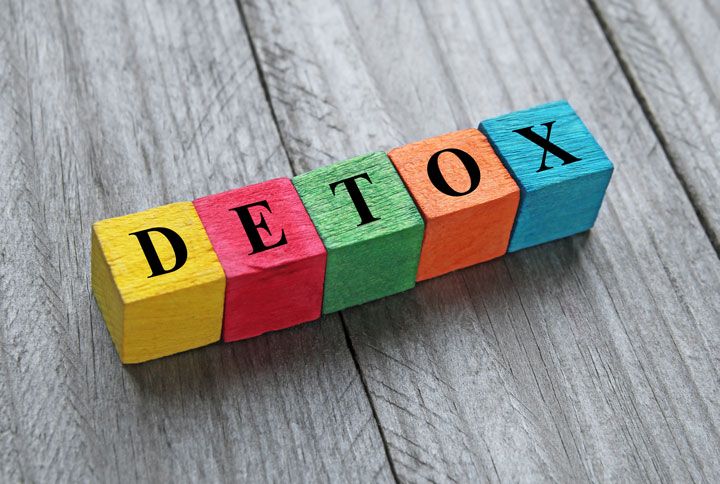
We’ve heard of detox foods, detox drinks and detox from social media but detox from shopping? Why, doesn’t that sound interesting? Detox from shopping clothes in particular. I see why it could get hard to understand the positive impact of this practice on you and the environment since it’s not direct but trust me, there’s many of them. But first, let’s start with understanding why we need to go on a shopping detox and why this practice has gotten popular in recent times. The answer is fast fashion. Fast fashion is exactly what it suggests—fast production and faster consumption, which practically means there’s no end to this vicious cycle.
There are about 4 natural seasons in a year and in tandem with them are 4 seasons that luxury fashion houses follow globally—spring/summer, pre-fall, autumn/winter and resort. Fast fashion has a completely different ballgame. The brands falling under this umbrella follow close to 52 seasons in a year which means a new collection every week. What are 4 nature-made seasons and what are 52 seasons? The difference almost makes my mind go numb. I’m sure you’ve either got your eyebrows raised or jaws dropped but yes, 50-52 “micro-seasons” per year.
Now in olden times, think prior to the ’60s, fast fashion was not as fast. It had a comparatively slower speed. But in the late ’90s, brands realised the quick turnover of cheap, trendy clothing that was similar in design to that of the clothes on the runways and it was then that the era of “see it, like it, buy it, wear it, throw it” began. And feeding this mentality further to increase profits came at a cost borne by our dear planet.
How? Some mindblowing facts to know:
Making clothes requires raw material. Making raw materials requires natural resources. Some of these natural resources are non-renewable and need to be used in moderated amounts. Take, for example, cotton. Cotton requires tons and tons of water to be grown—22,000 litres for 1 kg to be precise. It takes about half to 1 kg of cotton to be turned into a single t-shirt which if calculated takes about 3000 litres of water. Now can you imagine how long this kind of water would last us? Now let’s look at synthetic fabrics such as nylon or polyester or faux leather. These fabrics are made using crude oil, natural gas and some amount of PUV. Not only are these fabrics using up non-renewable resources at an alarming speed, they’re also non-biodegradable (cue in landfills) and after they’re treated with chemicals and tanning agents to be made into the final product, the toxic water left behind (in large amounts, of course) is dumped in our water bodies.
Most of these fabrics stay back and add to the landfills and sneakily make their way into the oceans and make it their home there in the forms of microplastics. The treatment of fabrics such as faux leather goes through a process of tanning which releases harmful greenhouse gases in the environment (cue in climate change). I could go on about this but you see how our increasing wants are being met? The thing is, we wouldn’t be in this position had the fashion industry not given rise to such a profit-over-planet system. As consumers, when we see something we like at attractively cheap prices, we tend to hit purchase blindly, right?
So your reason number 1 to go on a shopping detox is to save your planet.
The less you buy, the less you’re demanding from the brand and the less they’re producing. Obviously, because the demand’s gone down, they can’t afford to manufacture over and above. And that will give our environment that much-needed relief because imagine if a large percentage of the population takes on this detox?
How does it have a positive impact on us?
Let me ask you this, don’t we all strive to look good in what we wear? All of us to some extent are fashionistas at heart and love to have a great sense of style. But the more you buy, the less experimental you tend to be and mostly depend on external factors (like more clothes) to look stylish or trendy. But, if you quit shopping for a good amount of time and work with the clothes you already have, you will start to play around with them to curate new looks and fun looks. So the more you experiment, the better you become at styling clothes, amirite?
So your reason number 2 to go on a shopping detox is to brush up your styling skills.
When you shop less, aren’t you saving an enormous amount of money? Honestly, that sounds like a damn good reason to me ’cause I could use that money to get me lots and lots of sushi! (JK!).
So your reason number 3 to go on a shopping detox is to become rich again.
When you start to make do with what you have, you begin to realise how little it takes to survive. Leading a minimalistic lifestyle will make you feel more at peace because hoarding may seem like a little something to flaunt but it ends up leaving behind some amount of stress. Isn’t that why most of us declutter our spaces and wardrobes and whatnots? To get some perspective?
So your reason number 4 to go on a shopping detox is to eventually start needing fewer things to depend on.
To conclude:
I know I said there are numerous reasons why a shopping detox is a good practice to take on but I have only 4 of them and all of them are pretty darn good! That said, a shopping detox obviously does not mean you stop shopping altogether. You just take lengthy breaks between your retail shenanigans so as to decrease your need and the demand on the brands in the larger picture. So if you shop, say, once every two weeks, lessen it down to a month or two and then make it longer from there. Set your time frames according to your needs and preferences and alter as you go. And know that by doing this, you’ll be doing a good thing for the planet!
And to conclude my conclusion, don’t forget to join Girl Tribe by MissMalini to be a part of more such fun and thoughtful conversations.

